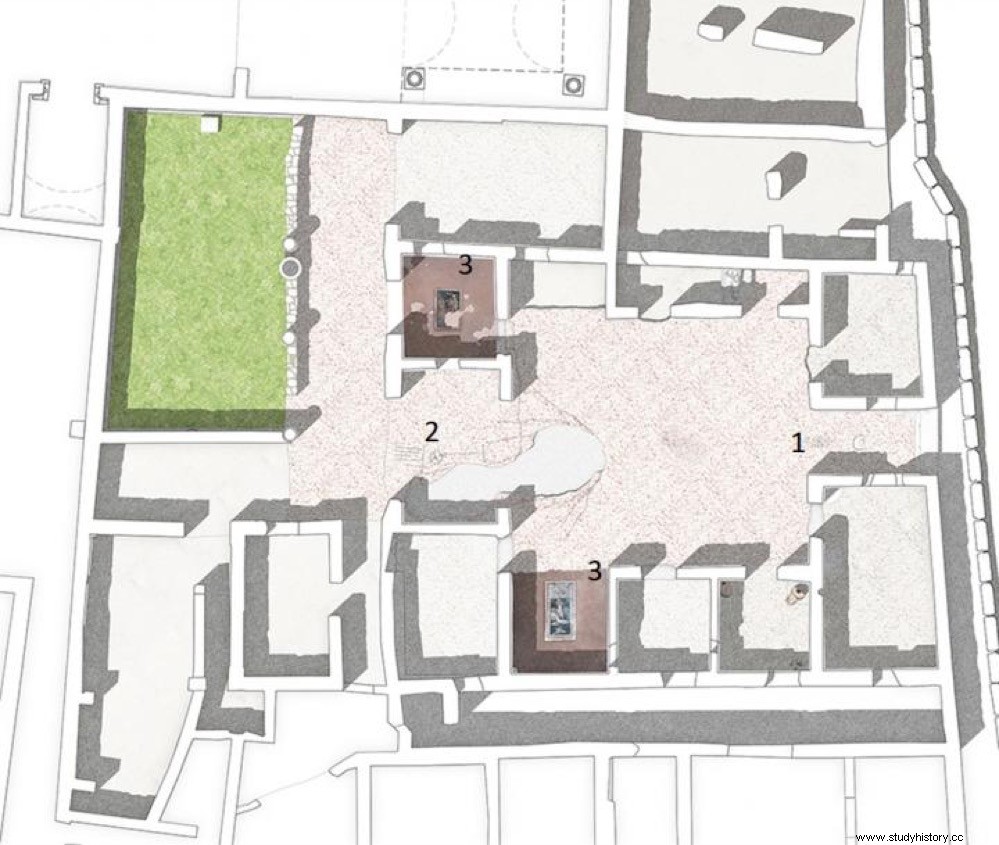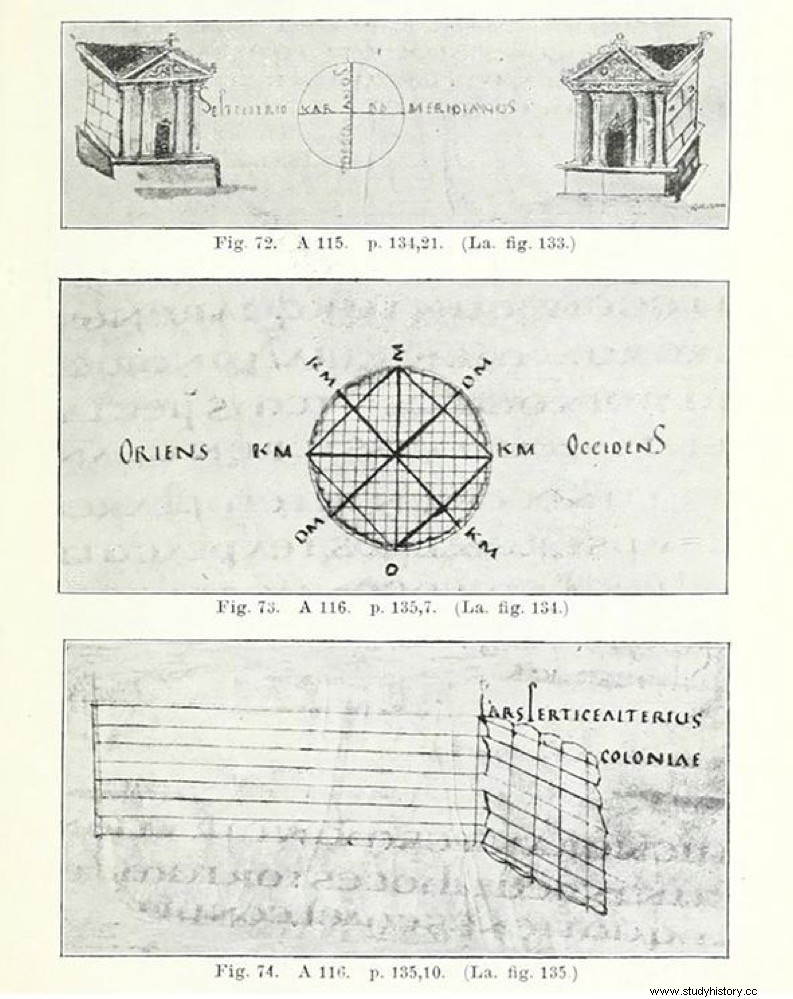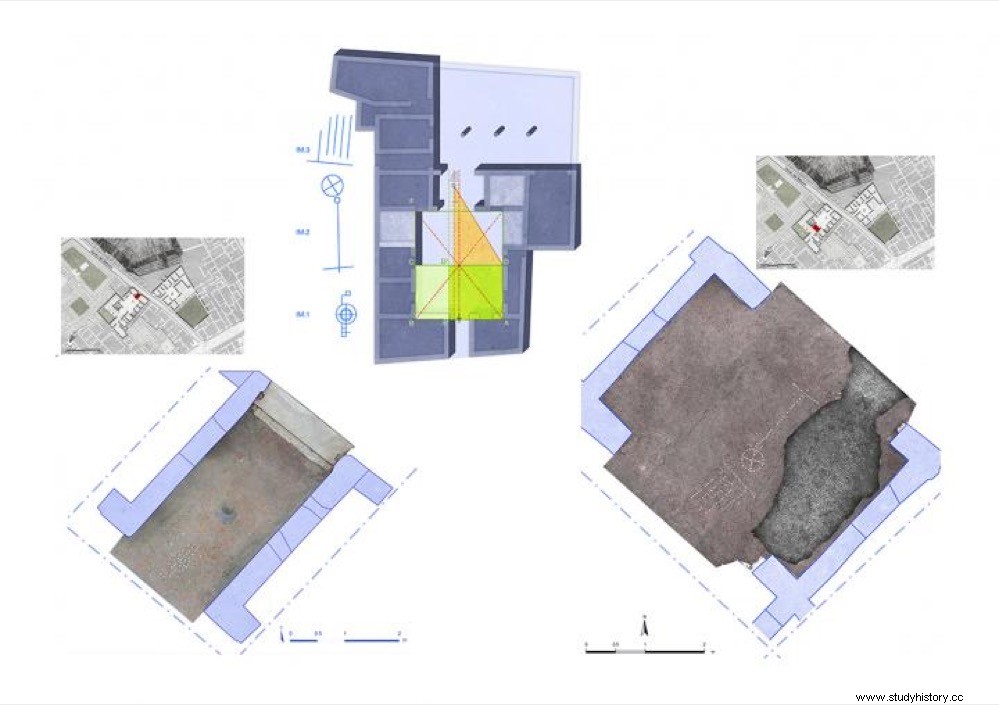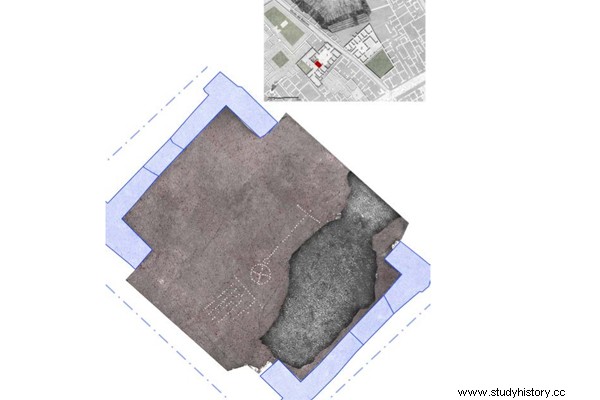The technical knowledge of the Roman surveyors, the technicians in charge of the centuriation (also called roman grid , a method of dividing the land into equal parts, equivalent to a grid on a plane) and other surveys, such as the planning of cities and aqueducts, are legendary. For example, in Italy and other Mediterranean countries you can still see high-precision centuriation projects. His work also had religious and symbolic links related to the founding of towns and the Etruscan tradition.

These technicians were called gromatics because his main work instrument was the Groma. It was a vertical pole that supported a crossbar in the shape of a cross with four perpendicular arms, from each of which hung a rope with identical weights, which acted as plumb lines. With it the surveyor could align two very thin opposing plumb lines with extreme precision with reference poles held at various distances by assistants or fixed in the ground, in the same way that red and white poles are used in theodolite surveying. modern.

Until now, the only known example of a Groma came from excavations at Pompeii, while the oldest images illustrating the work of the Gromatics come from medieval codices, dating back many centuries after the art of land surveyors. stop practicing.

Now Pompeii is again the place where new information about these ancient architects has appeared. Within the framework of the Great Pompeii project, inaugurated in 2014 and co-financed by the European Community, new archaeological investigations unearthed a house in whose interior almost intact floors have been found with two beautiful mosaics that probably represent Orion, and a series of enigmatic images.
The interpretation of the images has recently been carried out in a joint effort by Massimo Osanna, director of the Pompeii archaeological site, and Luisa Ferro and Giulio Magli, from the School of Architecture of the Milan Polytechnic.
Among the images there is, for example, a square inscribed in a circle. The circle is cut by two perpendicular lines, one of which coincides with the longitudinal axis of the house's atrium and appears as a kind of compass rose that identifies a regular division of the circle into eight equally spaced sectors. The image is strikingly similar to the one used in medieval codices to illustrate how the Gromatics divided space.

Another complex image shows a circle with an orthogonal cross inscribed in it, connected by five points arranged as a kind of small circle to a straight line with a base. The set appears as the representation of a Groma.

Was the house used for meetings and/or did the owner himself belong to the gromatic guild? We don't know for sure. In any case, however, and once again, Pompeii proves to be an invaluable source for understanding key aspects of Roman life and civilization.
